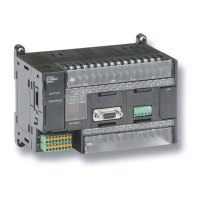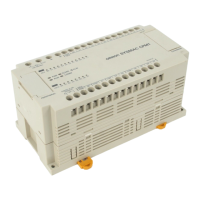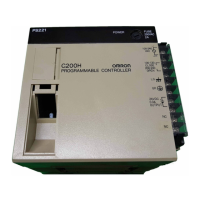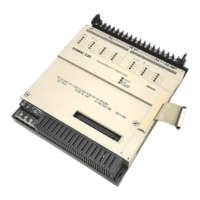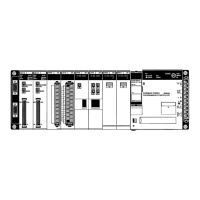262
How to Use the Sequence Table Block Appendix B
Explanation
The TBL command in the main table inputs the condition evaluation result for the same rule column in the
specified reference table as the condition signal.
When Y is entered as the condition rule for the TBL command, the condition evaluation result is input in the ref-
erence destination as is. If N is entered, the input is inverted.
TBL Command Details
• When the TBL command is used in the main table, the condition contacts (ITEM 025 to ITEM 028) for the
TBL command are always 0.
• The reference table condition rules (ITEM 021 to ITEM 024) display the internally held evaluation results.
12
Symbol
00
TBL (n) Y Y
Input a
12
00
Rule
Step
Table number
Condition
signals
Action
signals
Table number n
Symbol
Rule
Step
Condition
signals
Action
signals
Host Table
Reference Table
Input as is
Input as is
Condition
Condition
Action
Action
Evaluation
results
Evaluation
results
Reference
Reference
01 02 03
No. 00
001 T
BL( 7
02 ) Y Y Y
002
003
01 02 03
No. 00
001 I
N( 0
01.013 ) Y
002 I
N( 0
01.013 ) Y
003 I
N( 0
01.014 ) Y
Main Table
Reference
Table
(Block address: 702)
Execution Form
Sequence table referencing
(1) Table reference
References
evaluation result in
same rule columns.
Upper limit alarm output
Lower limit alarm output
High upper limit alarm output
Execution Form
Every cycle
Evaluation result for
condition rules in
reference table
Not met
Met
The Y indicates that the evaluation result
for the condition rule of the same number
in the reference table is input as is.
N indicates that the evaluation result for
the condition rule of the same number in
the reference table is reversed before
input.
Therefore, in this example, rule 1 specifies
that evaluation result Y is to be input as is,
so the reference result is ON (met). Rule 2
specifies that Y is to be input as is so the
reference result is OFF (not met).
Sequence Table
Signal
Signal
Sequence Table
Comment
Comment Step No.
Rule No.
Step No.
Rule No.
Met
